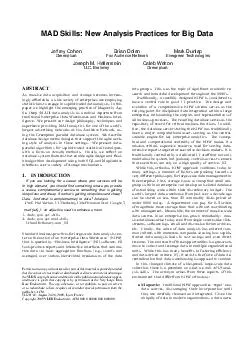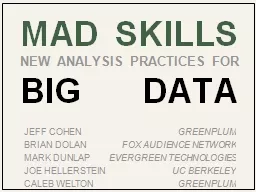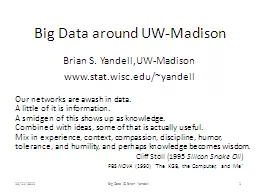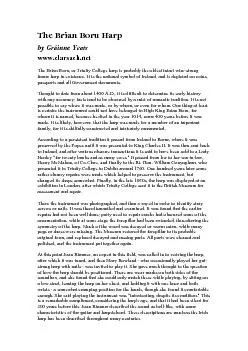PDF-MAD Skills New Analysis Practices for Big Data Jeffrey Cohen Greenplum Brian Dolan Fox
Author : myesha-ticknor | Published Date : 2014-10-15
Hellerstein UC Berkeley Caleb Welton Greenplum ABSTRACT As massive data acquisition and storage becomes increas ingly a64256ordable a wide variety of enterprises
Presentation Embed Code
Download Presentation
Download Presentation The PPT/PDF document "MAD Skills New Analysis Practices for Bi..." is the property of its rightful owner. Permission is granted to download and print the materials on this website for personal, non-commercial use only, and to display it on your personal computer provided you do not modify the materials and that you retain all copyright notices contained in the materials. By downloading content from our website, you accept the terms of this agreement.
MAD Skills New Analysis Practices for Big Data Jeffrey Cohen Greenplum Brian Dolan Fox: Transcript
Download Rules Of Document
"MAD Skills New Analysis Practices for Big Data Jeffrey Cohen Greenplum Brian Dolan Fox"The content belongs to its owner. You may download and print it for personal use, without modification, and keep all copyright notices. By downloading, you agree to these terms.
Related Documents














